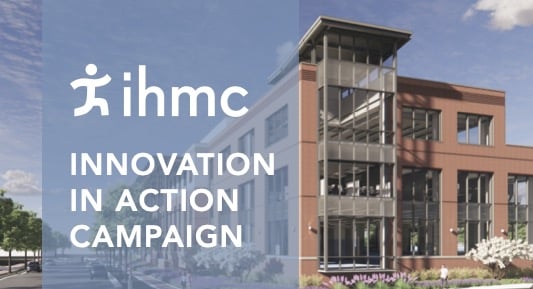INNOVATION IN ACTION
 |
“We want to help people live not just longer, but better. And with your help, we will meet that challenge as we have others in our 33-year-history — with a commitment to excellence fueled by collaboration and a passion for innovation.”
– KEN FORD |
The Next Step in Our Evolution Needs You
Vision — The Florida Institute for Human and Machine Cognition (IHMC) is a not-for-profit research lab pioneering ground-breaking science and technology aimed at leveraging and extending human cognition, locomotion, performance, and resilience. It is our shared vision to advance science and technology with the explicit aim of improving the human condition that motivates the scientists and engineers at IHMC.
Our History and Legacy — IHMC was founded by Dr. Kenneth M. Ford, Dr. Alberto Cañas, and Dr. Bruce Dunn on the campus of the University of West Florida in 1990. Over the years, IHMC has developed three core pillars of research: artificial intelligence, robotics, and human healthspan, performance, and resilience. These three research pillars continue to support the original research goal of IHMC — to employ science and technology to extend human capabilities.
Since its inception in 1990, IHMC was among the first interdisciplinary academic research institutions focused on human- centered computing and, in fact, coined the phrase. IHMC was an early pioneer in human-centered AI.
In 1999, IHMC moved into a newly renovated facility in downtown Pensacola at 40 S. Alcaniz St. In 2002, IHMC began building its robotics research program with the arrival of Dr. Jerry Pratt and other prominent robotics researchers.
In 2004, the Florida Legislature established IHMC as an independent, statewide research institute. In 2010 IHMC was recognized by the U.S. Economic Development Administration for the institute’s impact on downtown Pensacola. Also in 2010, IHMC opened a research facility in Ocala, Florida, strategically located near three major university research partners as well as the central Florida technology corridor.
The profile of IHMC’s robotics program was enhanced by the team’s participation in the Defense Advanced Research Projects Agency (DARPA) Robotics Challenge (2012-2015) which involved a series of three global robotics competitions involving several dozen teams from premier research institutions and technology companies. This four-year competition pushed the state of the art in humanoid robotics and was partly motivated by the Fukushima nuclear disaster. Overall, IHMC was the top performing team scoring two second-place finishes along with a first-place finish. In 2016 IHMC completed construction on the 30,000-square-foot Levin Center for IHMC Research at 420 E. Romana St. which houses state of the art robotics research facilities, laboratories, and offices.
The vision behind the Healthspan Resilience and Performance Research Complex coalesced over the 2018-2021 timeframe with the arrival of new senior leaders and key researchers. Dr. Tim Broderick, a surgeon by training and a former DARPA program manager joined IHMC in 2019 as the Chief Science Officer. In 2020, Dr. Marcas Bamman, a leading human performance researcher and director of a research institute at the University of Alabama Birmingham came to IHMC and brought some key colleagues with him. Dr. Morley Stone joined IHMC as the Chief Strategic Partnership Officer in 2021. He had previously been the Senior Vice President for Research at The Ohio State University and before that served as the Chief Technology Officer for the Air Force Research Laboratory, which includes the 711th Human Performance Wing. In 2022, IHMC announced plans to build a third building on the Pensacola campus to act as a research hub for human healthspan, resilience and performance research.
For the Healthspan, Resilience, and Performance Complex to become reality it was clear that a new type of research facility would be required to house a state-of-the-art research infrastructure and most importantly, brilliant, and motivated scientists and staff.

